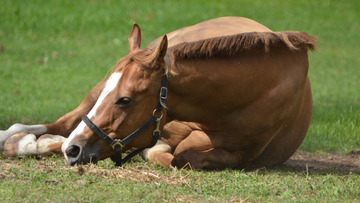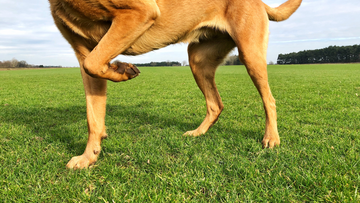Preventing equine internal parasites can be a serious concern for any horse owner. There are close to 150 species of parasites or worms that can affect your horse. They live in internal organs, body cavities, and tissues, and gain their nutritive source by feeding on the animal and ingested nutrients. It is vital that horses are treated with the right wormer at the right time of year. This can be achieved through a targeted worming schedule.
To some extent, harboring parasites is a natural and normal condition for equines. In the wild, however parasites barely build up to the point of seriously damaging their hosts health. A feral horse’s wandering, grazing lifestyle limits the number of parasites it will pick up from the environment. Domestic horses on the other hand, find parasites to be a potentially devastating threat to their health, largely because they are kept in confined spaces.

Key Signs of Infestation:
- Dull, rough hair coat
- Lethargy or decreased stamina
- Weight loss
- Coughing
- Tail rubbing and hair loss
- Colic
- Summer sores
- Depression
- Loss of appetite
- Diarrhea
Five Major Kinds of Equine Internal Parasites:
- Large and Small Strongyles (redworms and bloodworms)
- Ascarids (large roundworms)
- Bots (larvae of botflies)
- Pinworms
- Tapeworms
Due to parasites becoming increasingly resistant to the active ingredients used in equine worming products (anthelmintics), it is recommended that you test for the presence of worms using a faecal worm egg count before worming horses. This will help you to decide whether your horse needs worming or not.
Horse Dewormers:
Moxidectin: this ingredient is effective against encysted developing small redworm larvae as well as large redworm, pinworms, intestinal threadworms, ascarids (adult and larval stages) and will also treat bots.
Ivermectin: this ingredient is effective against both larval and adult stages of small redworms as well as pinworms, intestinal threadworms, stomach worms, lungworms, neck threadworms, ascarids and bots.
Pyrantel: this ingredient is effective against most adult roundworms and needs to be administered at twice the standard dose when being used for the treatment of tapeworm.
Praziquantel: this ingredient is effective against all three known species of equine tapeworm in a single dose. It is not effective against other worm types.
Fenbendazole/Mebendazole: these ingredients are less commonly used for worming as there is confirmed resistance to them. A five-day course of a fenbendazole-based wormer given between October and March will remove small redworm encysted larvae.
Management and Prevention:
- Clean and sanitize stall areas consistently
- Regularly rotate pastures
- Avoid overcrowding pastures
- Avoid wet pastures
- Feed hay in bunks or mangers (avoid feeding on ground)
- Deworm all animals in groups
- Deworm pregnant mares within 30 days of foaling
No matter what parasite, a management routine that interrupts the life cycle of the parasite before infestation occurs are the most effective keys to successful control and prevention. Keep this in mind for your upcoming deworming schedule!























